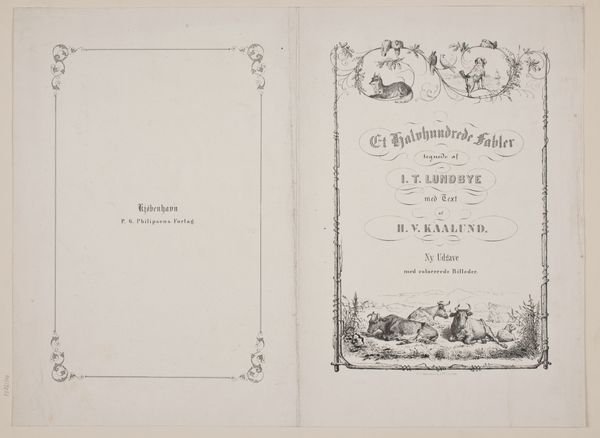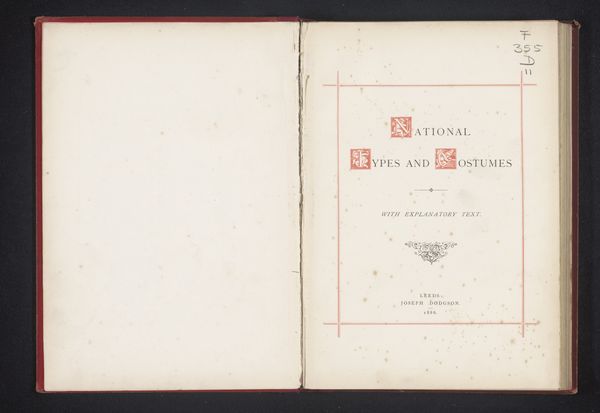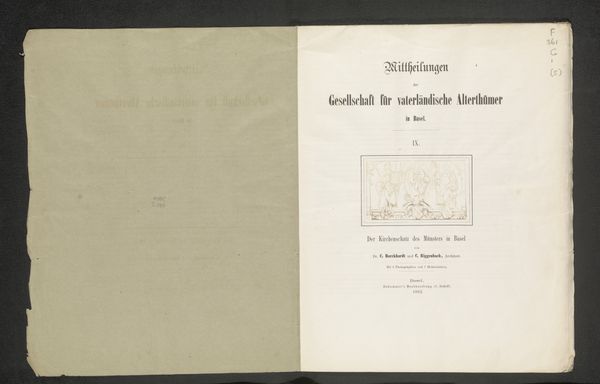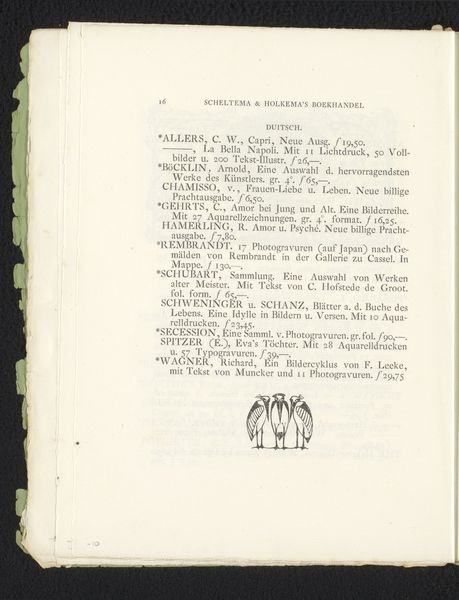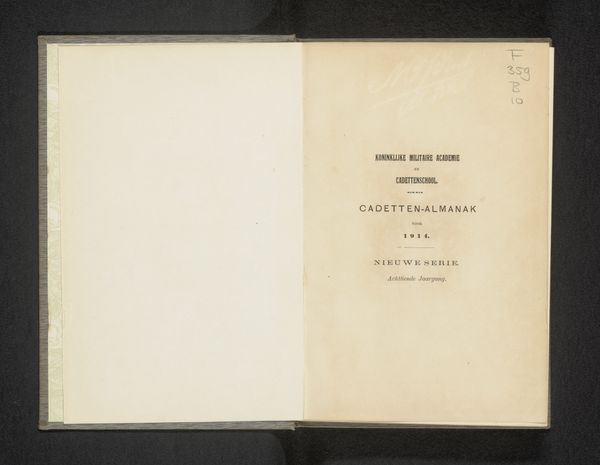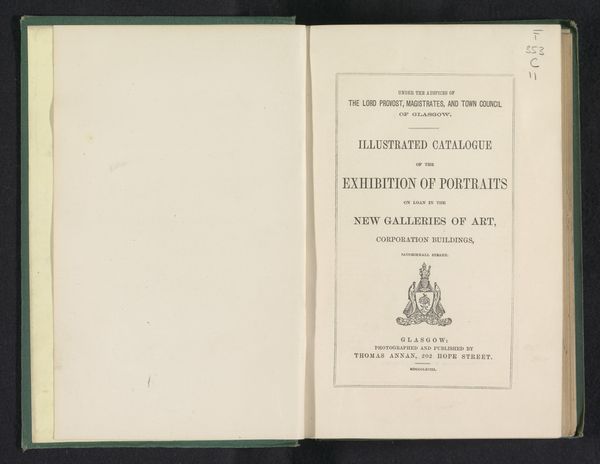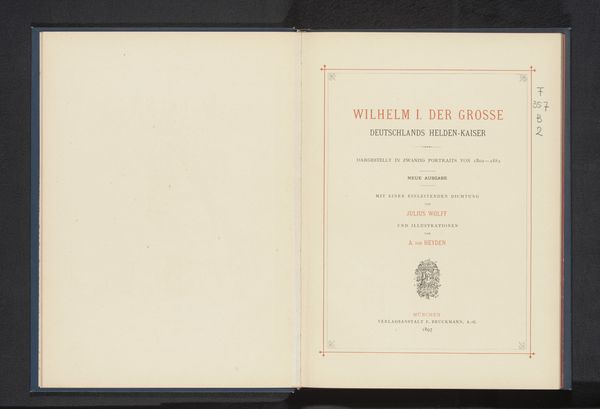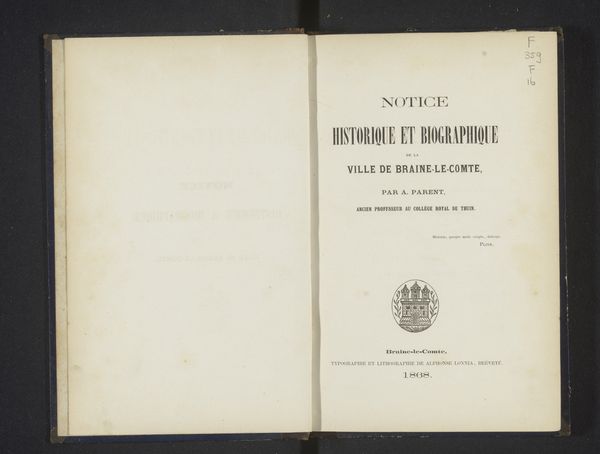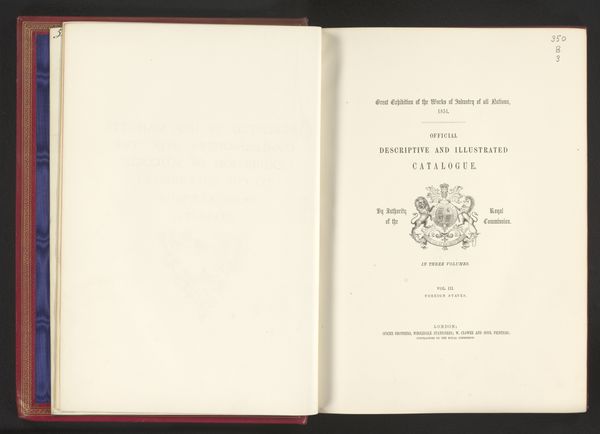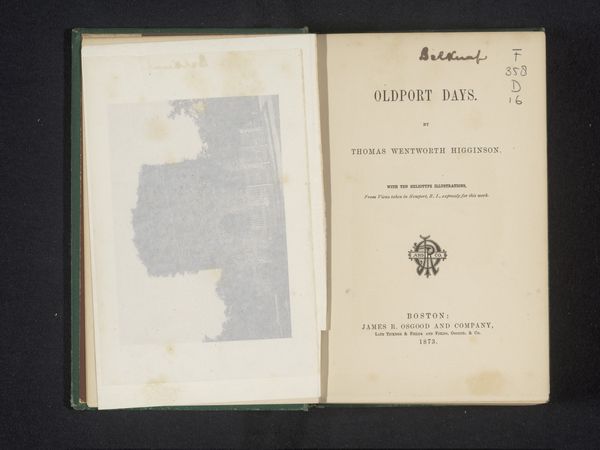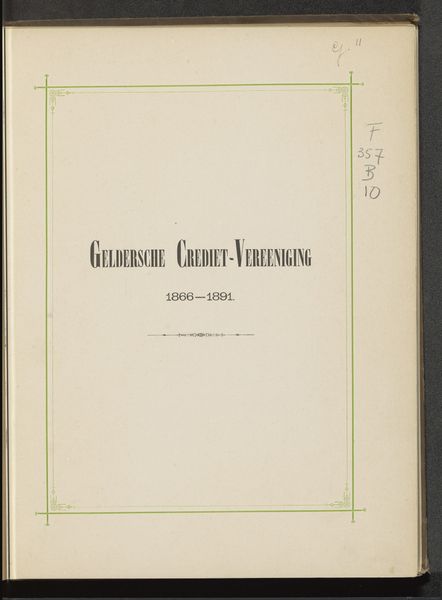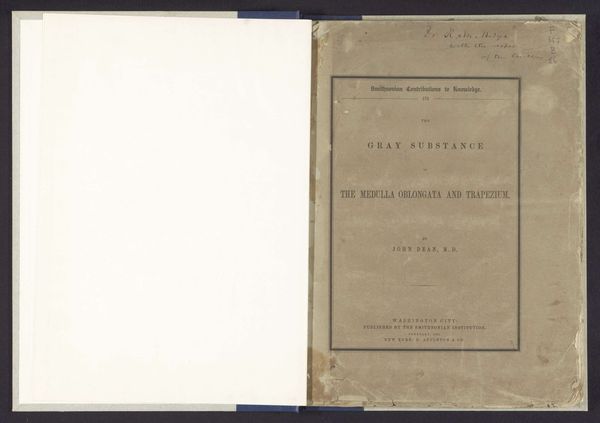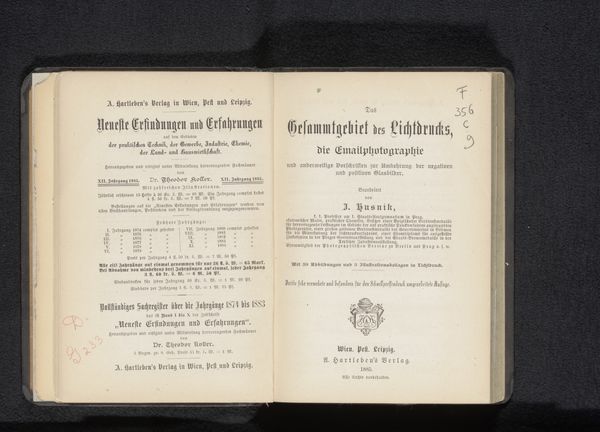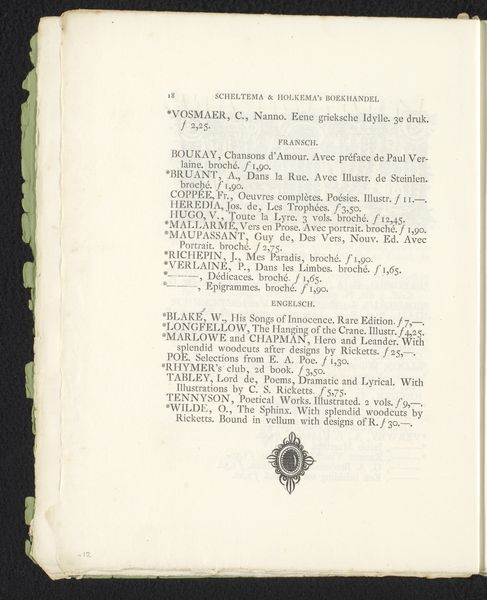
print, paper, typography
#
portrait
# print
#
paper
#
typography
Dimensions: height 281 mm, width 195 mm, thickness 18 mm
Copyright: Rijks Museum: Open Domain
Curator: This print, dating from around 1890, presents the title page to "The Plays of William Shakespeare," edited by Thomas Keightley. It’s held here at the Rijksmuseum. What are your initial thoughts? Editor: The first thing that strikes me is the rigid formality. The typography, the symmetrical framing… It speaks to a particular kind of bourgeois reverence for Shakespeare as a cultural commodity. Curator: Interesting take. For me, the immediate observation is the interplay of textures between the paper itself, presumably a somewhat mass-produced stock given the intended audience and publication scale, and the intricacy of the typographical elements. Note the use of different fonts and the decorative embellishments within the "W" and "S" themselves. Editor: And that ornate crest right above "In Four Volumes." It really underscores the socio-political function of texts like these, creating and maintaining a certain class distinction through cultural capital. Shakespeare wasn't just for everyone, was he? Curator: Indeed. Also consider the physical labor and resources required to produce such a volume. The sourcing of the paper, the craftsmanship involved in typesetting – it all points to a sophisticated industrial infrastructure geared towards mass cultural dissemination. Editor: Mass, but controlled. Think about the editor, Keightley, and his role in curating a specific version of Shakespeare for public consumption. He wasn't simply presenting Shakespeare unfiltered. The entire edition shapes how Shakespeare's plays were read and understood within the social context of late 19th-century London. The publishing house too, J. S. Virtue & Co. – they wielded considerable power in shaping tastes and promoting particular interpretations. Curator: Precisely. The print invites us to contemplate the materiality of Shakespeare's legacy and its transmission through carefully manufactured objects. It's not just the plays themselves but the book, the print, as a material object, which gives the written text its real weight. Editor: Absolutely. This single title page is a window into a complex web of social, economic, and artistic forces, far beyond just the genius of Shakespeare himself. Curator: A telling reminder of the myriad hands, machines, and systems that shape our experience of even the most timeless art.
Comments
No comments
Be the first to comment and join the conversation on the ultimate creative platform.
